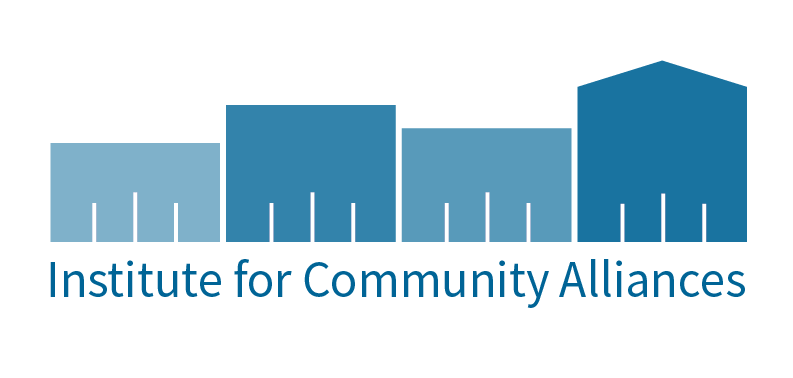CASE STUDY
____________________
Discovering Data Intersections – Homeless Does Not = Jailed
As Polk County, Iowa was exploring how best to respond to emerging homeless trends and issues, the community wanted to examine the overlap between persons staying in shelter and those who entered the criminal justice system.
Stakeholders believed this research could help guide the community in its efforts to more systematically and effectively address homelessness. Institute for Community Alliances was asked to conduct the study and analysis.
The Need to adapt
From 2009 to 2010, the number of Iowans identified as being at-risk of becoming homeless jumped by 75.6%, up from 20,362 persons in 2009 to 35,757 persons in 2010.
During this same period, Iowa’s largest adult emergency shelter based in Des Moines was routinely filled above bed capacity, with dozens of clients sleeping in chairs on any given night.
With the increasing visibility and awareness of homelessness as a local issue, city leaders and supervisors in Greater Des Moines and Polk County wanted to better understand the overlap between persons staying in shelter and those who entered the criminal justice system through the Polk County Jail.
Iowans at-risk of becoming homeless
Exploring Homelessness and Criminal Justice System Overlap Through Data
Institute for Community Alliances, which operates the Homeless Management Information System (HMIS) in Polk County, was asked to conduct a five-year look-back to examine the overlap between persons who had stayed at a homeless shelter and persons who had also been jailed in Polk County. Homelessness and housing issues related to persons having a felony on record were not addressed in this study.
Polk County shared jail booking data for the period of 2006-2010 with ICA, which took the lead in combining and analyzing jail and homeless data. In total, the study examined data for more than 159,000 people, with an overlap of 10,070, or 6.3%, who were involved in both the criminal justice system and HMIS.
To get a more useful understanding, the review was narrowed to those clients that were seen in transitional or emergency shelters only.
Of the 63,980 people in transitional or emergency shelter, 1,102, or 1.7%, had contact at some point with the criminal justice system comprising 12,992 episodes.
Episodes were defined as a person’s experience of homelessness either from shelter to jail or from jail to shelter. Jail data was matched with HMIS clients in emergency and transitional programs to create timelines of journeys through homelessness and the criminal justice system.
Data was reviewed within each year and back and forth an additional two years (2004-2010) to establish recidivism.
The research further explored and compared causal and related homeless factors and demographics, including economic stability, length of homeless episode, disabilities, family networks, gender, veteran status, type of shelter, type of criminal charges, and length of time in jail, among others.
What the data revealed
In addition to providing the initial comparison between persons who are homeless and persons who have entered the criminal justice system, the study revealed community opportunities to approach homeless-related issues in Polk County more systemically.
Polk County has three times as many individuals entering the homeless system compared to the number of individuals entering the jail system.[2]
Most people experiencing homelessness do not encounter jail.
Poverty is certainly a contributing factor to criminality and homelessness, but neither is causal of the other. They are related, in that in the relationship lies opportunity.
For those inmates and clients who do become sheltered there is an opportunity to address the common underlying causes of their instability.
Most clients who are jailed are not attached to a family in HMIS.
Most homeless clients who were jailed were seen in emergency programs in 2006. By 2010 that had changed and most were being seen in transitional housing programs.
Jailed shelter populations are:
35%-39% more likely to suffer from a substance abuse disability than sheltered populations not involved with jail
19% more likely to have a mental illness disability
2% - 9% more likely to have a health-related physical or other disability
For inmates with disabilities, there is opportunity to develop programs that address those disabilities and in doing so address related homelessness.
to Learn More
View the full report compiled by ICA Research Director, Ehren Dean Stover Wright PH.D.
Polk County, Iowa: Homelessness and Criminal Justice
To learn how ICA can help your community, state or region conduct a cross-system analysis that includes homeless or housing stability programming and related services, contact us using the form below or at 515-246-6643.
Next Up
____________________
Homeless No More – A “Real-time” Data Strategy
Des Moines, Iowa was one of the first cities to sign on to First Lady Michelle Obama’s challenge to U.S. mayors to end Veteran homelessness. As the Homeless Management Information System (HMIS) Lead for Des Moines since 2001, the Institute for Community Alliances was naturally positioned to organize and lead the initiative.




